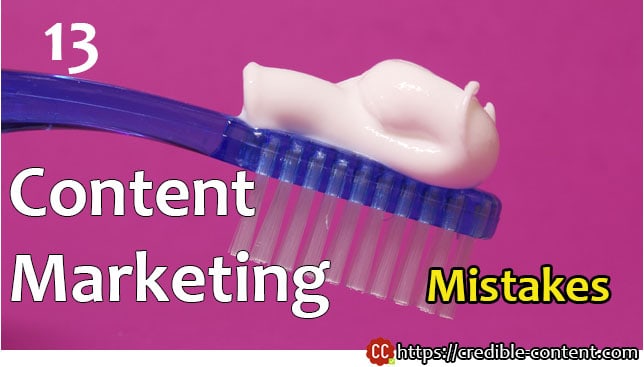In my previous blog post titled How to Add Method to The Content Marketing Madness I briefly touched upon the point of maintaining a content marketing calendar so that you always know what you’re doing, how you are doing it and at what time you are doing it. Most people call it “Content Marketing Editorial Calendar” but here I’m not just talking about writing content and hence, organising topics and assigning them to various days; I’m talking about scheduling everything that you need to do in order to implement a result-oriented content marketing strategy.
Content marketing calendar helps you define a vision
The biggest problem with content marketing is when the enthusiasm wears off people are often at a loss, especially when you are a small business. What to do? And even if we do it, is it worth it? Aren’t we wasting time needlessly publishing blog posts that nobody reads? Why post links to various social networking websites?
You don’t come across such doubts when you are just launching your content marketing campaign because then you’re full of enthusiasm and confidence. Then, after maybe a month or so, you don’t experience much improvement. The search engine traffic doesn’t improve. You don’t see many people coming to your website. Your sales haven’t increased. You aren’t getting more leads. Your developing doubts – are you making a big mistake investing so much in content marketing?
But you know content marketing works. It is working for other businesses. Then why isn’t it working for you?
It is working for other businesses because they have already gone through the phase that you are going through right now and passed through it unscathed. They had prepared. They had a calendar and they simply stuck to it.
Once you have developed a content marketing calendar and written down the sort of effort that would be required, the sort of budget that will need to be allocated, and a long list of pros and cons that may come your way after a few weeks or a few months, you are already prepared for the phase of discouragement. Even if you are not experienced enough to anticipate lean periods, at least you know what you’re going to do for the next 2 months – yes, don’t create a content marketing calendar just for a few weeks. At least focus on the next 2 months.
A content marketing calendar will also help you formulate a strategy according to the resources you have or you may have in the coming days so that you don’t stretch yourself or go over budget. For instance, if you know that in order to publish new content for the next 2 months you will be requiring at least $ 3000, you must have that much money with you.
Doesn’t it all sound like a “plan” rather than a “calendar”? Yes, it does sound like a plan, but with dates allocated. I’m calling it a calendar because then you know that if today is January 20, 2015, exactly what blog post you will be publishing on February 15, 2015, what exact steps you will be taking to promote either your latest content or some existing piece of content and how you will handle or incorporate some sudden developments – having to write a blog post on a sudden political development or a natural catastrophe or scientific breakthrough.
Do you need a dedicated calendar application to maintain a content marketing calendar? Besides, how do you create such a calendar?
Rather than a calendar application I would recommend a spreadsheet application. You can use Google Docs (because then the documents can be accessed remotely by everybody) or you can use Microsoft Excel.
Open a new spreadsheet and rename the first worksheet as something like “Publishing Calendar”. You can insert another worksheet and rename it as “Marketing Calendar”. Why have separate worksheets? It is easier to maintain different activities.
Anyway, go back to the “Publishing Calendar” and in the top row, create the following columns:
- ID: A unique ID can be assigned to every piece of content so that you can enter related information in different worksheets.
- Date: On which date that particular piece of content will be published?
- Format: What sort of content are you going to create? Blog post? Webpage? Video? Info graphic? PDF? Slide? Stop Motion Animation?
- New or Existing: Are you revising/streamlining existing content for creating new content from scratch?
- Topic or Headline: The topic on which the webpage or the blog post will be created.
- Where: Whether you’ll be publishing the piece of content on your own website or blog or somewhere else.
- Author: Who will be creating/writing that particular piece of content?
- Responsible: If yours is a bigger organisation and you have a dedicated content marketing team, exactly who will be responsible for the timely publication of that particular piece of content?
- Current Status: What is the current status of that content? Is it being written? Is it being edited and proofread? Is it being reviewed?
- Visuals: What sort of images or videos will be used with this content?
- Topic Categories: Under what categories this content will be published?
- Keywords and meta data: What keywords should be targeted while creating this piece of content?
- Call to action: Every piece of content must have a call to action. What is going to be for this piece of content?
- Related URLs: Is related content already existing? Are there some existing URLs you would like to be linked to from this piece of content?
After you have created these columns you can start filling in the details and building your publishing calendar.
Simultaneous you can also move onto the marketing calendar and create the following columns:
- Content ID: This unique ID was created in the “Content Publishing” worksheet.
- Date: The date on which this particular marketing activity will be carried out.
- Channels: What channels you are going to use to promote your content – Facebook, other websites, email broadcast, Twitter, LinkedIn, et cetera.
- Format Conversion: Can this content be converted to another format? For example, can you create a slideshow or video presentation with the help of this content and then submit it to the appropriate social media website?
Actually, this can go on and on and it depends on how comprehensive your content marketing is going to be. Somewhere you can also include analytics and the changes carried out due to the data derived from those analytic tools.


